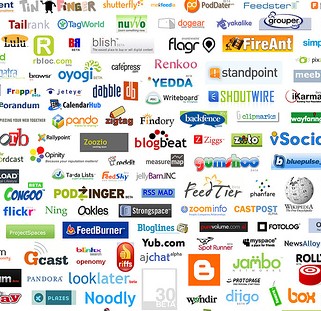 When I started writing this post I was decided to title it “Marketing 2.0”. But then I started wondering: aren’t pretty much everything on the Internet today named 2.0? It looks like that if you have a name or an idea lacking credibility, coolness or innovativeness you can just add 2.0 to it and be set. Check out the number of results I gathered searching some “2.0 terms”:
When I started writing this post I was decided to title it “Marketing 2.0”. But then I started wondering: aren’t pretty much everything on the Internet today named 2.0? It looks like that if you have a name or an idea lacking credibility, coolness or innovativeness you can just add 2.0 to it and be set. Check out the number of results I gathered searching some “2.0 terms”:
- “Business 2.0” – 6.740.000 results
- “Marketing 2.0” – 122.000 results
- “Management 2.0” – 117.000 results
- “Network 2.0” – 63.100 results
- “Technology 2.0” – 97.300 results
Anyway. The information age is changing most activities in our society, and marketing is no exception. Internet and new media are creating different ways for people to communicate, work and live. The question then becomes: how can marketers revise their strategy to embrace those innovations? Below I provide the top 5 marketing trends under the information age:
- Go for the niche: (or as Guy Kawasaki puts it “Niche Thyself”) in the past mass marketing was the rule because identifying and serving small groups of clients with particular interests or needs was a time-consuming and costly process. The improvements in Information and Communication Technology and the advent of Internet, however, now enable companies to efficiently address small and specific markets.
- Focus on relationships: companies need to value the relationship with the customer and not only the sale itself. Someone exclusively interested in selling might try to elude the consumer with non-relevant products. If you care for the relationship, on the other hand, you will make sure you are been transparent and providing real value for your client.
- Rely on word of mouth: the widespread of blogs, wikis and social networks empowered “word of mouth” as an advertising model. Consumers are changing the way they collect and interpret information, often times a referral from a peer can be more influential than a television spot.
- Measure with ROI – Return on Influence: if the market changes, the way you measure your performance must change as well. When companies adopt innovations such as corporate blogging or podcasting they should measure the results with “Return on Influence” rather than “Return on Investment”.
- Use IIC advertising: the sooner companies start developing Intelligent, Interactive and Converged advertisings the higher their chances of success. Intelligent advertising creates the right message, at the right time, for the right customer. Interactive means the consumer should be able to interact with the advertising itself. Converged involves delivering the message in the most suitable form – text, audio, video or any combination of them – independently of the device the customer is using.
Comments are closed.